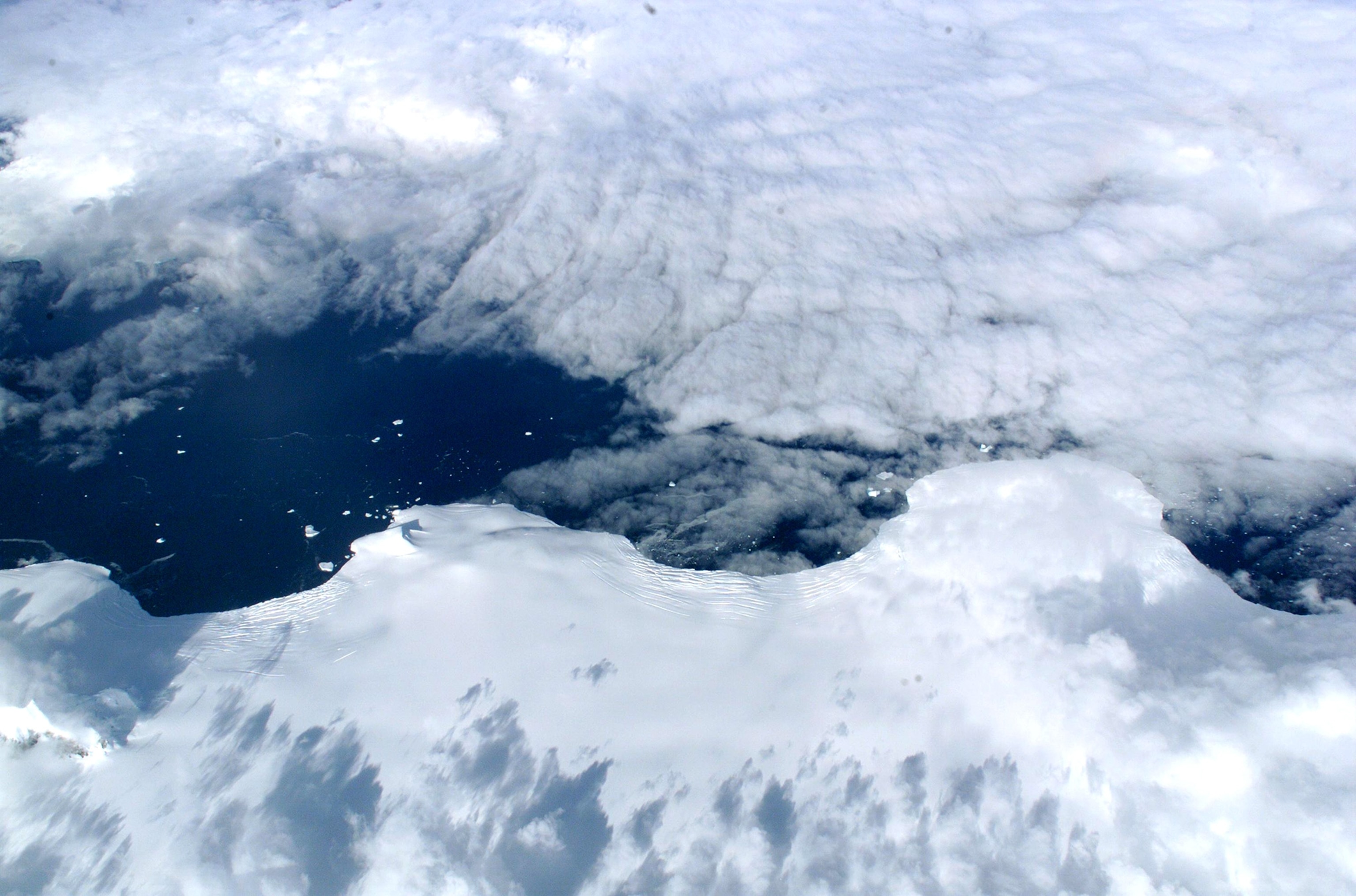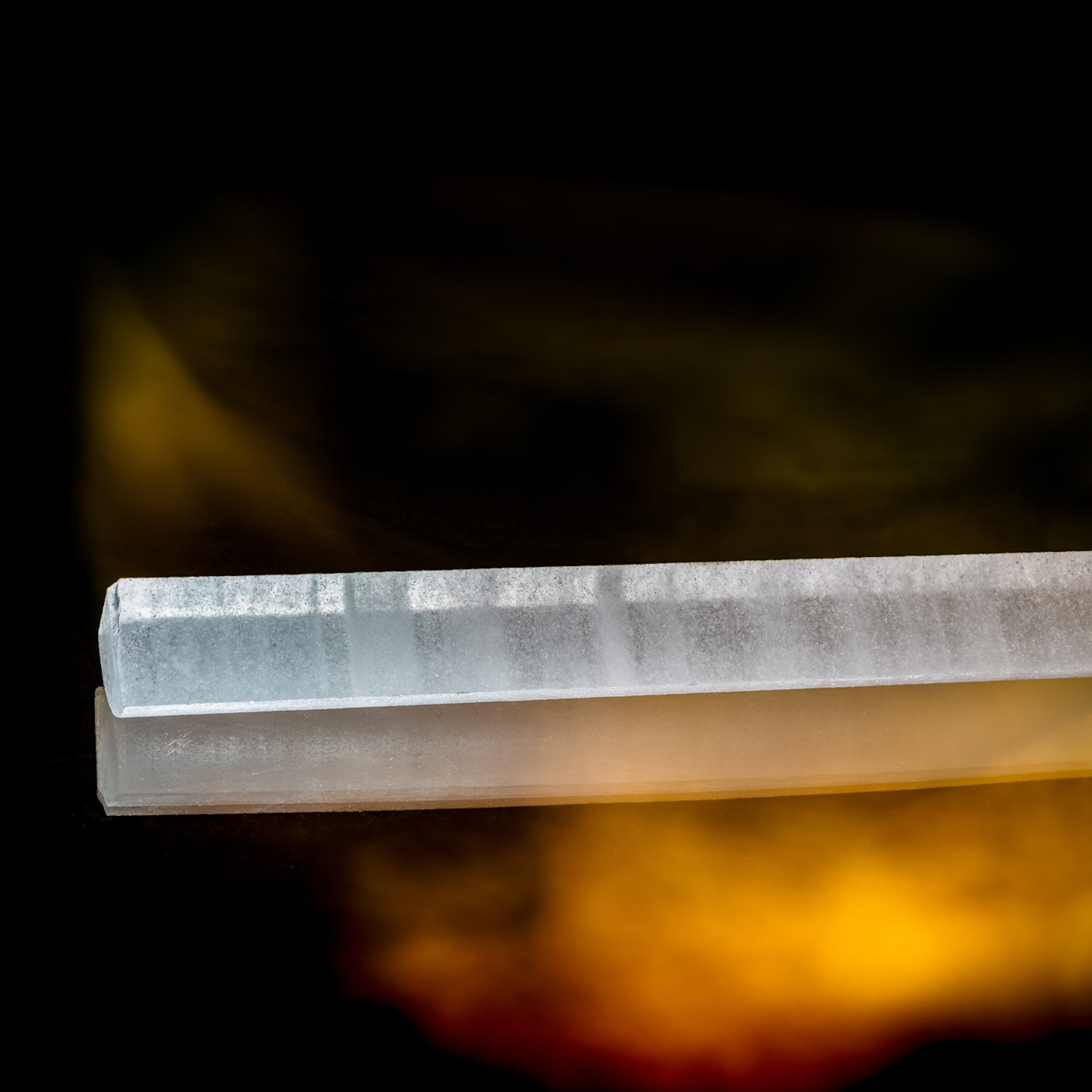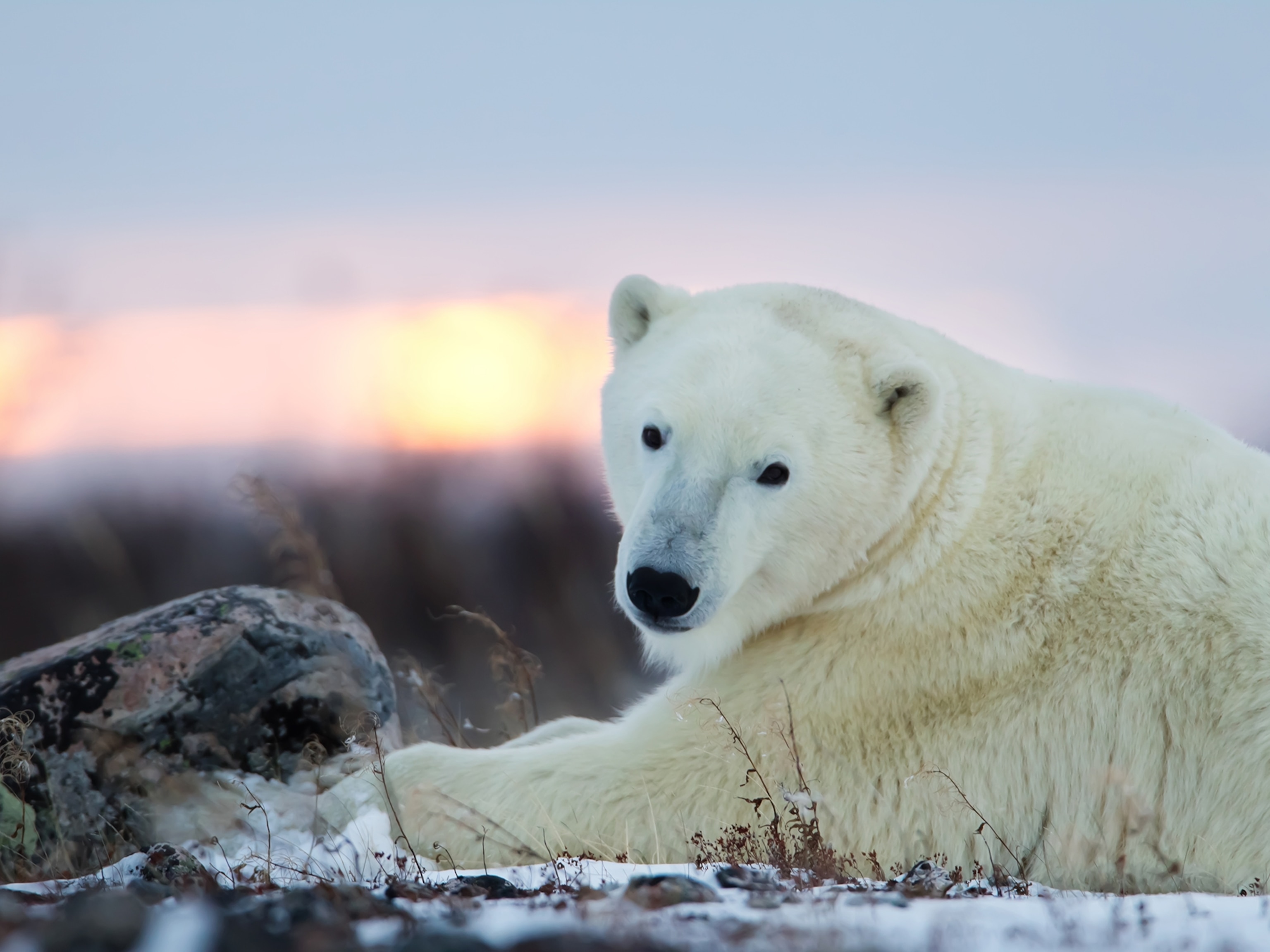
Mysterious Winds Cause Rapid Melting of Antarctic Ice
Scientists suspect warm föhn winds may be responsible for calving ice shelves—and when they occur is surprising.
A peculiar storm swept across the mountains of the Antarctic Peninsula in February of this year. Several scientists hunkered down in their tents as a torrent of horizontal-blowing snow washed through.
Erin Pettit found her way through the camp by following a series of red and green canvas flags flapping on bamboo poles. But when she paused and looked up, she saw something strange: a circle of blue sky directly overhead. It revealed that no new snow was actually falling—the blizzard consisted entirely of recycled snow—a thin layer of it, only a few feet thick, blowing along the ground.
The wind had scoured this snow off the surfaces of glaciers as it accelerated down the east side of the Peninsula’s mountains. When the winds finally let up, Pettit emerged from her tent to find the snow mushy beneath her boots.
The temperature had topped 40 degrees Fahrenheit. Training her binoculars on the lower reaches of Starbuck Glacier, six miles to the east, she saw that it had taken on a bluish tint: The wind had melted enough snow to form hundreds of ponds on the glacier’s surface. It was just the sort of observation that Pettit and three other researchers had come here looking for. (See a time line of Antarctic expeditions.)
After studying Antarctica’s warming climate for decades, scientists are making a surprising discovery: In some places, much of that abnormal warmth is invading in the form of powerful, downhill winds called föhn (pronounced “fone”) winds. Pettit, a glaciologist from the University of Alaska in Fairbanks and a National Geographic explorer, now suspects that these winds contributed to a series of dramatic glacial collapses that have been steadily redrawing the map on the east side of the Antarctic Peninsula for the last 30 years. Föhn winds may have escaped scientists’ notice because they don’t just blow during summer—some of their most impressive heat waves actually strike in the dead of winter, eroding glaciers at a time of year that no one thought possible.
“They seem to impart a lot more melt onto the ice shelf than we had imagined,” says Adrian Luckman, a glaciologist at Swansea University in the United Kingdom, who studies this region of Antarctica. The winds result from subtle changes in the atmospheric circulation due to climate warming; they could have major consequences.
Land of Melting Ice
Antarctica sits isolated at the bottom of the world, surrounded by a vortex of circumpolar winds and ocean currents that swirl endlessly around it. “The Antarctic Peninsula is the only barrier” to these winds, says Pettit. “The only thing they have to slam into.”
The peninsula stretches 700 miles upward into the Southern Ocean. Its mountainous spine rises 5,000 to 9,000 feet above sea level, capped with a plateau of ice—forming a wall that usually diverts the circumpolar winds northward around it. The east side of the Peninsula, shielded from these winds, is especially cold. For thousands of years, it was flanked by a series of vast ice plains—so-called “ice shelves,” 800 feet or more thick, which float on the ocean, extending up to 150 miles out over it.
The ice shelves had formed as dozens of glaciers oozed off the coastline of the peninsula, merging their ice into a vast apron that spread over the sea. But all of this began to change in 1988.
One by one, the ice shelves on the east side of the peninsula began to collapse. The first two ice shelves simply went missing—present at the beginning of a summer, then gone by the end. But the collapses of Larsen A ice shelf in 1995 and Larsen B in 2002 were violent events, documented by human witnesses and satellite photos. Larsen B, covering an area larger than the state of Rhode Island, shattered over a matter of days into thousands of shards, each larger than an aircraft carrier.
Larsen A and B showed similar symptoms leading up to their disintegration. Both ice shelves lost their insulating cover of snow, laying bare a darker, icy surface that absorbed more heat from the sun. Melt ponds grew and metastasized across their surfaces. Then this water drained into deep cracks in the ice. Its weight pushed the cracks ever deeper, like a wedge, until it broke through the bottom, says Theodore Scambos, a glaciologist at the National Snow and Ice Data Center, who has studied these ice shelves for many years and camped with Pettit in Antarctica last February.
These insights seemed to explain the sudden collapse of four ice shelves in 15 years. But then in 2010, Scambos and Pettit discovered something new that would change their view of the situation.
In February of that year, they visited a small surviving piece of Larsen B—now called the Scar Inlet Ice Shelf—and installed several automatic weather stations on and around it. (See the top 10 recent scientific discoveries in Antarctica.)
Scar Inlet saw its final sunset of the year on June 13, 2010. By the height of the Antarctic winter in mid-July, temperatures there had dropped to minus 30°F. That’s when the weather stations beamed back some unexpected news via satellite phone. On July 14, winds suddenly picked up, and the temperature at Scar Inlet rose 77 degrees, peaking at 50°F. Meltwater trickled through the snow. The heat wave lasted 36 hours.
Scambos quickly recognized this as a föhn wind—a phenomenon known in other mountainous regions, from the Alps in Europe to the Rockies in Colorado. An unusual configuration of high and low pressure systems had pushed the circumpolar winds directly over the mountains of the Antarctic Peninsula rather than deflecting them to the north as usual. As the air rose up the west side of the mountains it dropped its moisture as snow—a process that counterintuitively warms the air, since water molecules release heat as they condense from vapor into ice crystals. The air then slid down the east side of the mountains—causing the air to warm further as it compressed—triggering the heat wave.
When Scambos and Pettit returned to Scar ice shelf in early 2011, they found it eerily unchanged: Boot prints from the year before remained on its surface, solidified through thawing and refreezing. Any new snow that fell during the winter had been obliterated by winds. Scambos, Pettit, and a handful of other scientists now suspect föhn winds helped set the stage for recent ice shelf collapses. These events continue to have far-reaching consequences.
Accelerating Sea Level Rise
The collapse of the Larsen A and B ice shelves in 1995 and 2002 removed a buttress that slowed and stabilized glaciers flowing off the peninsula’s coastline. With that backstop removed, the glaciers have accelerated to as much as nine times their original speed—vastly increasing the rate at which they dump ice into the ocean and fuel sea level rise.
Continued climate warming is expected to increase frequency and strength of föhn winds on the peninsula, says Pettit.
The weather stations installed by her and Scambos have already recorded temperature spikes as warm as 60°F. And although the winds had died down for several years, they suddenly picked up again in September. Weather stations at Scar Inlet detected eight föhn events during September and October, each lasting one to three days, lifting temperatures as high as 48°F.
Scambos is already seeing their impact, in satellite images of the area. The ice shelf appears darker than usual, as does the surface of the sea ice that sits in front of the ice shelf. “The areas of high wind speeds and warm winds are evaporating the snow, probably melting it a bit too,” he says—exposing older, bluer ice on the surface.
That darker ice will absorb more heat during the Antarctic summer from November to February, creating large melt ponds that could trigger the final collapse of Scar Ice Shelf.
The winds also threaten the ice shelf in another way. Ever since Larsen B collapsed in 2002, a flotilla of sea ice, some if it greater than eight feet thick, has pushed up against the front of Scar Inlet, bracing the remaining ice shelf and holding it in place, even as the glaciers that push into it are tearing it apart.
But satellite photos now show that in just the last few weeks, föhn winds have pushed much of that stabilizing ice out to sea, with more disappearing each week. That remaining rim of protective sea ice bears similarity to a Gothic arch supporting a building overhead, says Pettit: “If you take the key piece out, the whole arch collapses.” The Scar Ice Shelf that it was supporting will also collapse. The last vestige of Larsen B will be gone. (See photos of Antarctica's animals.)
Hope for a Giant Ice Shelf?
Just a few miles south sits the next ice shelf in line, aptly named Larsen C. It dwarfs the others, covering an area as large as Maryland, and stabilizing more glaciers than all four previously collapsed ice shelves combined.
On June 10, a team of British scientists led by Luckman reported a disturbing discovery on its north end. Larsen C should be covered by 200 feet of insulating snow. But they found that in some places, all but 10 feet of it had already vanished—erased, in part, by föhn winds.
That finding raises the specter that melt ponding will continue to increase until it threatens the stability of Larsen C. But it also opens an opportunity: After decades of being surprised by these collapses, scientists are finally getting ahead of the problem and anticipating what is next, with a better chance to understand it. “It’s early days yet; we don’t really know the whole story,” says Luckman. “We’re keeping a very careful eye on it.”
Watch six scientists and survival experts dispatched to Antarctica to learn more about melting ice in the new show Continent 7, on National Geographic, starting at 10/9c on November 15.








